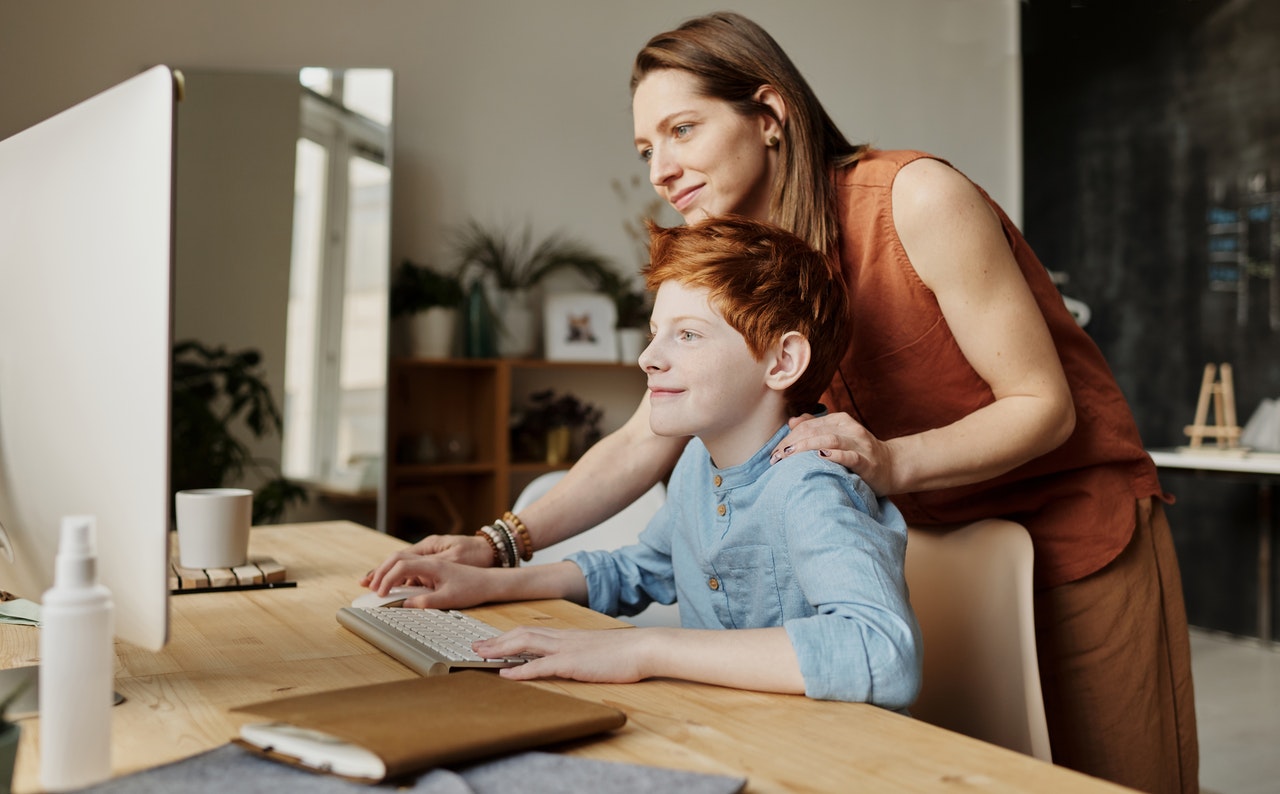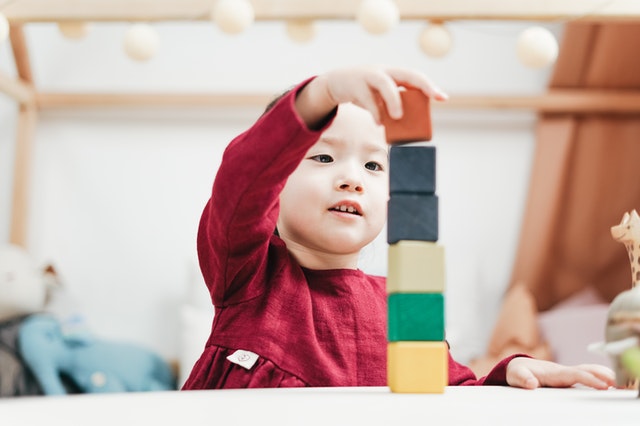At the rate our society has become so dependent on technology, it’s safe to say that basic computer programming is no longer a literacy that only those interested should learn (and eventually master). Computer coding for kids shouldn’t be some sort of extracurricular activity that only forward-thinking parents enroll their kids into. It should become a mandatory course for students of all levels.
Based on current patterns, trends, and technological advancements, the future is coding. Just as computer literacy has become a requirement for many different careers (even those outside the computer science sector), so too will computer programming.
Thankfully, it seems that kids of today agree. According to Code.org, upwards of 10 million school kids have dabbled in the annual Hour of Code event. Programming has become an increasingly popular topic.
And with the current global pandemic confining many of us to our homes, many now have the time and means to pursue it.
Our society runs on software. Teaching kids how to use, interact, and potentially modify it correctly can prove to be an extremely useful skill in other endeavors. But not all programming languages are the same. Some of the more complicated ones can certainly turn kids off from ever learning how to code.
This is why coding languages for kids are so important. They strip away the technicalities and frustrations of regular programming in order to help kids (and beginners) familiarize themselves with foundational concepts.
In this article, we’ll be covering what we believe are the 12 best coding languages for kids as of 2021.
1. SCRATCH

Primarily developed for kids between the ages of 8 and 16, Scratch is a free-to-use educational programming language developed by Mitch Resnick and patented by the Lifelong Kindergarten Group at the Massachusetts Institute of Technology (MIT). It is arguably one of the most well-known, block-based programming languages aimed at kids and new coders thanks to its intuitive and highly visual interface.
The Scratch platform provides kids with everything they need to develop art, animations, games, interactive stories, and the like. And they do it in a clean, straightforward way—effectively keeping frustrations low and engagement high. Bright colors, clear labels, and interesting characters all make this platform an excellent starting point for teaching coding for kids.
Perhaps the main reason Scratch is one of our top picks is due to the freedom of expression it affords children. The whole concept behind creating visual-based coding languages for kids is to simplify the programming process.
If you’ve ever seen or tried text-based coding, you know that the risk of technical and/or syntax errors is pretty high. A single semicolon or closed bracket out of place can render forty lines of code useless, and having to scan each line for that one error is just as frustrating as (if not more than) it sounds.
The mere thought of putting a child through all that is pretty improbable.
Visual, block-based programming languages like Scratch remove textual technicalities so that kids can focus on learning (and mastering) the fundamental concepts of coding. With Scratch, literally anyone – with any level of experience –can develop animations, games, and interactive stories from the ground up.
What’s more, Scratch’s online community is huge. There are currently over 70 million registered users (and counting) who have created and shared more than 82 million projects using the Scratch platform. Anyone can join this community so long as they’re friendly, respectful, and follow the MIT Scratch Team’s community guidelines.
Interacting with like-minded people and seeing the kind of programs that can be done with Scratch can be an incredible source of inspiration and motivation for your child. In fact, Scratch users (fondly called Scratchers) are required to store their projects (including the code!) to the Scratch server.
This allows fellow Scratchers to access the code and study it so they can see how more advanced programmers develop complex games—using the same language they’re learning!
If your child is interested in learning how to code with Scratch, you can check out CodaKid’s Scratch Coding Course. It’s sure to be an in-depth, extensive, educational, and engaging experience.
2. BLOCKLY

Blockly is another visual block programming language for kids that comes highly recommended. In fact, it’s often viewed as Google’s response to MIT’s Scratch.
At first glance, the two platforms are pretty similar. Blockly also uses lines of code chunked into blocks and a drag-and-drop system to help kids learn coding concepts. Like Scratch, this eliminates the risk of technical errors and allows kids to focus on the fundamentals. Blockly also makes use of a bright, intuitive, and user-friendly interface to keep kids interested and engaged.
The biggest difference between the two lies is that Blockly – as a visual, block-based programming language for kids – is actually made out of several pre-existing coding languages.
Developed under the Apache 2.0 license, Blockly is often described as a “client-side JavaScript library for creating visual programming block editors.” This simply means that kids aged 8 and up can create games, animations, and programs using Blockly from the safety of their own browser.
They’ll also be programming using a mix of popular coding languages – like JavaScript, Python, PHP, and the like – written in the form of visual blocks. This is thanks to Blockly’s JavaScript library, which basically serves as a centralized location where the pre-written languages can be accessed. Users can also switch programming languages (ex. From Python to PHP) should the need arise.
Blockly’s UI is especially colorful, and the coding blocks they use all have different shapes. This helps kids find, select, and identify the right blocks easily. The main scriptwriting platform is separated into two parts: a toolbox that holds the blocks you need and a blank space to drag and drop and the blocks on (i.e., write code). Kids simply choose the block they want, drag them out of the toolbox, and drop them onto the blank space (one at a time). Once the blocks are on the space, they can then rearrange them to create sequences, loops, conditionals, and so on.
Blockly runs the finished program through a check-up (similar to running textual code through a debugging process). If the solution isn’t correct or the program doesn’t run the way it should, Blockly analyzes the code again until it finds the error, and then highlights the error for the user to find and correct.
This highly visual, clean-cut way of coding makes it possible for anyone to develop an actual working Android app. That’s right; you can make actual apps with Blockly. So even though Blockly was primarily intended as a coding language for kids, the capabilities of the language itself make it so much more than just a simple teaching tool for children.
3. ALICE

Alice is another free-to-use, block-based visual programming language for kids developed by Carnegie Mellon University. It’s an innovative coding environment that makes it fairly simple to program animations, interactive narratives, and easy games in 3D.
Alice is designed to teach the concepts of object-oriented programming language (like C++) through creative exploration—with a side focus on logical and computational thinking skills, fundamental programming principles, and a foundational understanding of coding overall.
Alice utilizes the same drag-and-drop-building blocks system that Scratch, Blockly, and most other visual coding programs use. And, just like those platforms, this eliminates the clutter that comes with text-based coding and allows the users to focus on simply developing scripts and writing up solutions.
What differentiates Alice from Scratch and Blockly the most is that it also allows users to work with dynamic camera angles and 3D models.
Programs created using Alice’s platform can be converted into an Integrated Development Environment for programming in Java—also known as a Java IDE. This basically translates scripts written in Alice’s coding blocks to actual text-based programming languages like JavaScript or Python. This means kids can transition from using visual programming to standard programming while working on the same script or project.
The only thing to take note of this feature is that it may push younger audiences into trying real, text-based programming too fast or too soon (even with the 10+ recommendation). But for kids with a real passion for coding – and don’t mind the challenges that go with it – this shouldn’t be too big a problem.
4. LUA (Roblox)
For kids who want to start with (or venture into) textual coding languages for kids, Lua is a great option. It’s a free, portable, and beginner-friendly scripting language that introduces simple concepts while optimizing readability and efficiency.
This does not, in any way, compromise its functionality as a program or platform, either. Despite its simple interface and minimal technicalities, Lua remains one of the most powerful free languages available.
This programming language has often been likened to Python in that they are both simplified text-based scripts meant to eliminate potential syntax issues that could make coding for kids frustrating. For instance, there is no need to write semicolons at the end of each line of code.
Due to its efficiency and incredible portability, Lua is great for programming embedded devices and mobile apps. In fact, did you know that the once-popular (and highly addictive) game Angry Birds was based on Lua? That’s not all. Roblox – one of our all-time favorite coding platforms for kids – uses Lua.
CodaKid’s Game Development with Roblox track also happens to be one of our most popular online courses, because our students get to create an exciting array of games using Lua code.
Lua also has a huge, active community only (just like Scratch). It’s full of fellow coders, learners, and experienced developers who are more than happy to provide guidance, tips, and feedback to the younger and newer members.
5. JAVA (Minecraft)
We do have to admit that we’re not as fond of Java as we are of Lua. Java as a programming language is sufficient, effective, and functional enough to be a fairly popular choice in the programming community. However, as a programming language for kids, it’s not our favorite. There are a few reasons we’re including it on this list, though, and the biggest is that Java is the language of Minecraft—an online sandbox gaming platform that almost everyone knows and/or has heard of.
Ever since its initial launch in 2011, Minecraft has slowly risen in popularity amongst children, teens, and even adults! The very nature of the game encourages creative thinking and lateral problem-solving skills.
Despite its simplistic – almost cartoonish – design, Minecraft actually offers a complex, multifaceted gaming experience. The game doesn’t force the player’s hand in any way. In fact, Minecraft players don’t even have to play the actual “main quest” of the game. They are free to explore, mine, craft, and build as they please.
In the context of teaching coding for kids, Minecraft can be a powerful tool for teaching kids logic, problem-solving, visual-spatial skills, and hand-eye coordination—just to name a few.
Top Kids Coding Languages: Recap
It’s important to remember that every child is different. There is no one-size-fits-all solution to teaching coding for kids.
The 5 languages we studied, evaluated, and recommended here are all excellent choices. Here’s a quick recap of the list:
- Scratch
- Blockly
- Alice
- Lua
- Java
Related Reading:
From ease-of-use to features to latent abilities, each one is just as beneficial as the other—if not in just a different way. You also need to take into account growth and development. A kid who grows up with Scratch may soon crave a more exhilarating challenge with text-based coding.